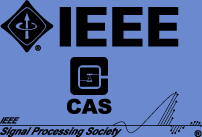Revolutionizing Healthcare: Advanced Signal Processing in Medical Imaging Breakthroughs
In the dynamic landscape of modern healthcare, medical imaging stands as a pivotal pillar, enabling clinicians to peer inside the human body with unparalleled precision. However, beneath the surface of these images lies a world of intricate data, waiting to be deciphered. Enter advanced signal processing, an ingenious technology that holds the key to unraveling this hidden information, enhancing diagnostic accuracy, and ultimately transforming patient care. In this comprehensive exploration, we delve into the groundbreaking realm of medical imaging breakthroughs powered by advanced signal processing techniques, catering to a diverse audience – from medical professionals and researchers to students and healthcare enthusiasts, including those looking to buy history papers.
Section 1: Foundations of Medical Imaging and Signal Processing
The journey begins by understanding the bedrock of medical imaging, encompassing a multitude of modalities such as X-ray, MRI, CT, PET, and ultrasound. These imaging techniques provide invaluable insights into the human body's inner workings, but it's the marriage of these images with signal processing that truly unlocks their potential. Signal processing, akin to a digital maestro, orchestrates the transformation of raw image data into intelligible, high-resolution visualizations. This fusion not only reveals anatomy but offers a deeper understanding of physiological processes.
Section 2: Advancements in Image Reconstruction and Enhancement
Imagine capturing an image with only fragments of data and then, through the wizardry of iterative algorithms, stitching these fragments into a cohesive, high-quality tapestry. This is the magic of advanced signal processing in image reconstruction. Compressed sensing further dazzles, allowing us to obtain detailed images in a fraction of the time, a boon for efficient patient care. The symphony continues with deep learning, a melody that harmonizes noise reduction and artifact correction, elevating image clarity to new heights.
Section 3: Quantitative Imaging and Tissue Characterization
Beyond images lies the realm of numbers – quantitative imaging. Signal processing equips us with the tools to peer into tissue properties with unprecedented accuracy. Diffusion-weighted imaging navigates the labyrinthine microstructure of tissues. Perfusion imaging, akin to a medical traffic controller, assesses blood flow dynamics. Then, elastography steps onto the stage, evaluating tissue stiffness and offering early glimpses into disease emergence.
Section 4: Multi-Modal Fusion for Comprehensive Diagnostics
In the realm of medical imaging, one modality can be informative, but multiple modalities orchestrated by signal processing create a symphony of insights. By integrating MRI, CT, PET, and ultrasound, we craft a holistic narrative of a patient's condition. This fusion transcends individual snapshots, painting a comprehensive portrait that guides diagnosis and treatment.
Section 5: Real-time Imaging and Interventional Applications
Imagine surgeons guided not by sight alone but by real-time images. Here, signal processing performs its most enthralling act – enabling dynamic visualization during procedures. Image-guided surgeries, catheter-based interventions, and minimally invasive procedures become precision acts, improving patient outcomes and reducing risks. As technology evolves, so do our capabilities, promising even more remarkable real-time imaging advancements.
Section 6: Artificial Intelligence and Deep Learning in Medical Imaging
As our technological symphony progresses, a new instrument joins the orchestra – artificial intelligence. Machine learning algorithms, guided by deep learning, elevate medical imaging to new dimensions. Lesion detection, segmentation, and disease classification dance to an automated rhythm, augmenting human capabilities. However, this waltz comes with its own cadence of challenges, including ethical considerations that warrant thoughtful reflection.
Section 7: From Research to Clinical Practice: Validation and Adoption
Signal processing's journey from the laboratory to the clinic parallels a phoenix's ascent. Validation studies and clinical trials bestow credibility upon these innovations. Success stories illuminate the path – signal processing techniques that rewrote the diagnostic script, reshaped patient care, and forged new horizons for medical imaging.
Section 8: Emerging Frontiers and Future Directions
The grand finale approaches, with emerging imaging modalities stepping into the spotlight. Photoacoustic imaging, hyperspectral imaging, and terahertz imaging are poised to rewrite the script once more. Signal processing's role as an enabler of these frontiers cements its place as a cornerstone of medical imaging's evolution. Yet, amidst these breakthroughs, challenges and uncharted territories beckon, forging a future brimming with promise and discovery.
Section 9: Ethical Considerations and Patient Privacy
As we embark on this technological odyssey, it's imperative to navigate the ethereal waters of ethics. Signal processing, a conduit to medical insights, comes with responsibilities. Patient data security, informed consent, and potential biases must be acknowledged and addressed, ensuring that the promise of advanced diagnostics is realized without compromising patient trust.
Conclusion
Our expedition through the realms of medical imaging and advanced signal processing draws to a close, leaving us with a profound understanding of its impact. It's a testament to collaboration – where medical professionals, researchers, engineers, and administrators converge to harness this remarkable fusion. As we bid adieu, we extend an invitation to stay abreast of the latest advancements, explore uncharted territories, and contribute to the symphony that orchestrates the evolution of medical imaging and signal processing.





